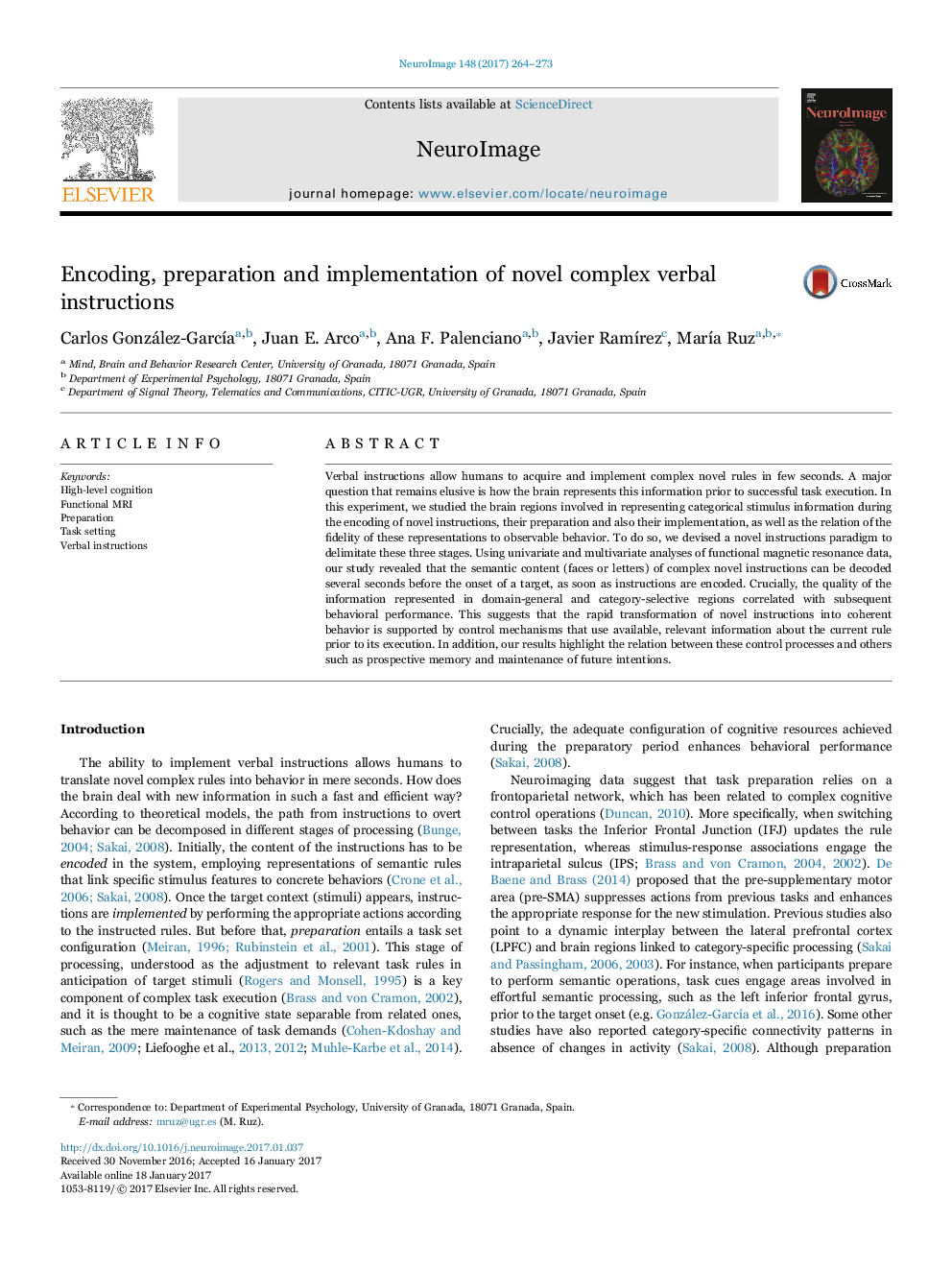ترجمه فارسی عنوان مقاله
رمزگذاری، تهیه و اجرای دستورالعمل های نوین پیچیده کلامی
عنوان انگلیسی
Encoding, preparation and implementation of novel complex verbal instructions
| کد مقاله | سال انتشار | تعداد صفحات مقاله انگلیسی |
|---|---|---|
| 154673 | 2017 | 10 صفحه PDF |
منبع

Publisher : Elsevier - Science Direct (الزویر - ساینس دایرکت)
Journal : NeuroImage, Volume 148, 1 March 2017, Pages 264-273
ترجمه چکیده
دستورالعمل های کلامی به انسان اجازه می دهد قوانین پیچیده ای را در چند ثانیه به دست آورد و اجرا کند. سؤال اصلی که باقی مانده است، این است که چگونه مغز این اطلاعات را قبل از اجرای کار موفق نشان می دهد. در این آزمایش، مناطق مغزی که در ارائه اطلاعات محرمانه محرمانه در طی رمزگذاری دستورالعمل های جدید، آماده سازی آنها و نیز اجرای آنها، و نیز ارتباط وفاداری این بازنمایی به رفتار قابل مشاهده، مورد مطالعه قرار گرفتند. برای انجام این کار، ما دستورالعمل دستورالعمل جدیدی را برای محدود کردن این سه مرحله طراحی کردیم. با استفاده از تحلیل های چند متغیره و چند متغیره از داده های رزونانس مغناطیسی عملکردی، مطالعه ما نشان داد که محتوای معنایی (چهره ها یا حروف) دستورالعمل های جدید پیچیده می تواند چندین ثانیه قبل از شروع هدف رمزگشایی شود، به محض اینکه دستورالعمل ها کدگذاری شوند. نکته مهم این است که کیفیت اطلاعات موجود در حوزه عمومی و مناطق انتخابی مرتبط با عملکرد رفتاری بعدی. این نشان می دهد که انتقال سریع دستورالعمل های جدید به رفتار منسجم از طریق مکانیزم های کنترل پشتیبانی می شود که از اطلاعات موجود در مورد قانون فعلی قبل از اجرای آن استفاده می کنند. علاوه بر این، نتایج ما ارتباط بین این فرآیندهای کنترل و دیگران مانند حافظه آینده نگر و حفظ نیت های آینده را برجسته می کند.

